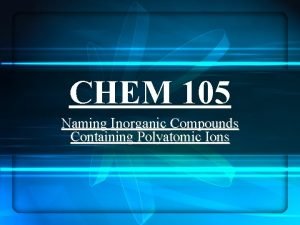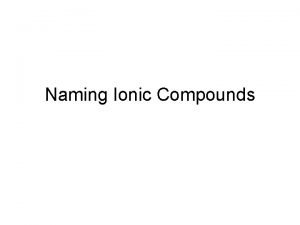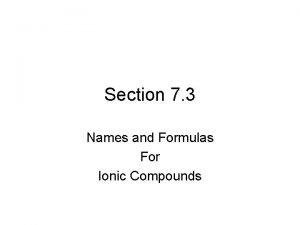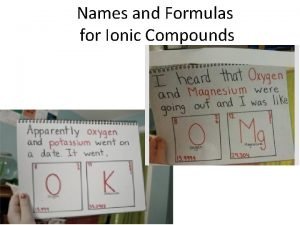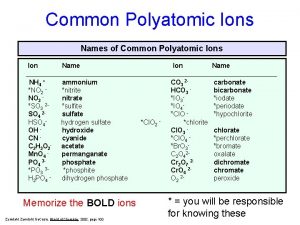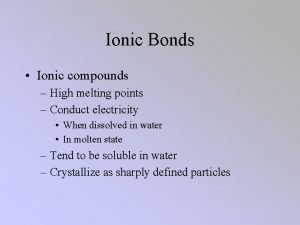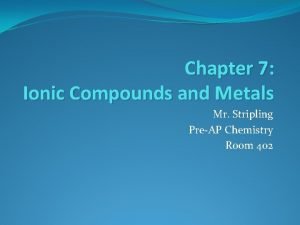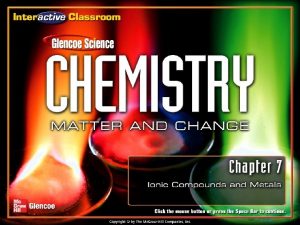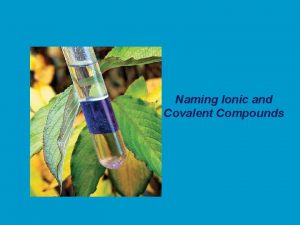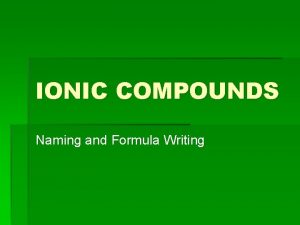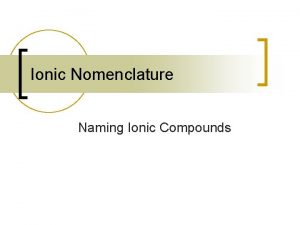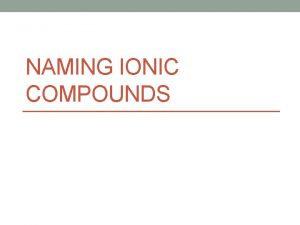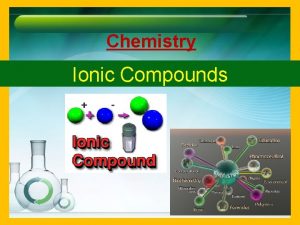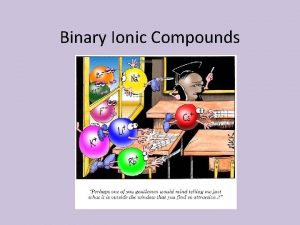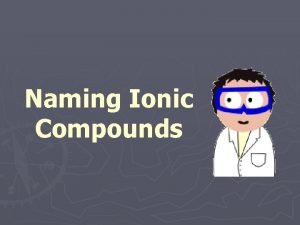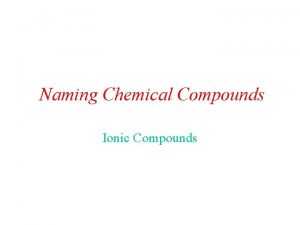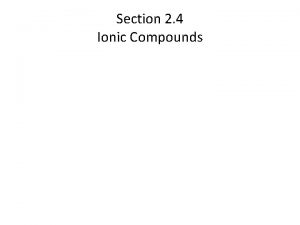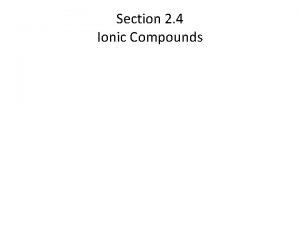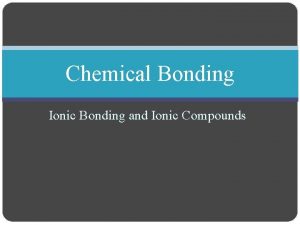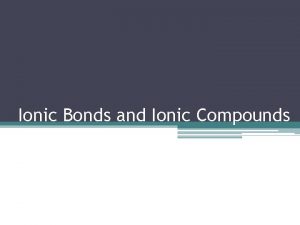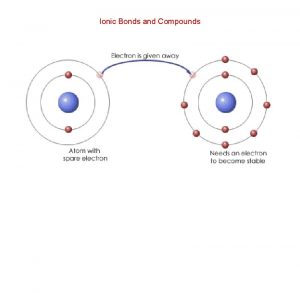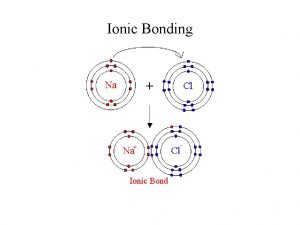Section 2 7 Ions and Ionic Compounds Ions















- Slides: 15

Section 2. 7 Ions and Ionic Compounds

Ions • Nucleus is unchanged by chemical processes • Atoms, however, readily gain and lose electrons • And an ion is created!

Cation • Ion with a positive charge • An electron was lost

Anion • Negatively charged ion • Atom gained an electron

Ions

Simple Ions • Electrically charged atom • Na + • Cl -

Polyatomic Ions • Electrically charged groups of atoms • Can be positively or negatively charged • NO 3 – • SO 4 2 -

Chemical properties of ions are drastically different from the chemical properties of the atoms from which they are derived!!

Predicting Ionic Charges • Use the periodic table!! • Many atoms gain/lose electrons in order to end up with the same number of electrons as the noble gas closest to them

Examples Sodium (Na) has 11 electrons, but if it loses one electron, it ends up with 10 just like Neon (Ne)! Na - one electron Na+ All elements in group 1 are common +1 ions

Chlorine (Cl) has 17 electrons, but if it gains one electron it ends up with 18 – just like Argon (Ar)!! Cl + one electron Cl – All elements in group 17 are common -1 ions


Ionic Compounds • Many bonds involve the transfer of electrons from one substance to another • Ionic compounds contain both positively and negatively charged ions • Opposite charges attract!!

Example Sodium occurs most commonly as a +1 cation Chlorine occurs most commonly as a -1 anion (Na+) + (Cl-) Na. Cl

Ionic compounds are generally combinations of metals and nonmetals (Na. Cl) Molecular compounds are generally composed of nonmetals only (H 2 O)
 Ionic, covalent and metallic bonds venn diagram
Ionic, covalent and metallic bonds venn diagram Naming compounds containing polyatomic ions
Naming compounds containing polyatomic ions Ionic compounds polyatomic ions
Ionic compounds polyatomic ions Section 3 names and formulas for ionic compounds
Section 3 names and formulas for ionic compounds Section 3 names and formulas for ionic compounds
Section 3 names and formulas for ionic compounds Positive ions and negative ions table
Positive ions and negative ions table 89 common polyatomic ions
89 common polyatomic ions Ions and ionic bonding cornell doodle notes
Ions and ionic bonding cornell doodle notes Monatomic formula
Monatomic formula Ionic bond melting point
Ionic bond melting point Ionic compounds and metals chapter 7
Ionic compounds and metals chapter 7 Chapter 7 ionic compounds and metals assessment answer key
Chapter 7 ionic compounds and metals assessment answer key Naming ionic and covalent compounds
Naming ionic and covalent compounds Predicting and naming ionic compounds
Predicting and naming ionic compounds Ionic compound properties
Ionic compound properties 7 ionic and metallic bonding practice problems
7 ionic and metallic bonding practice problems

